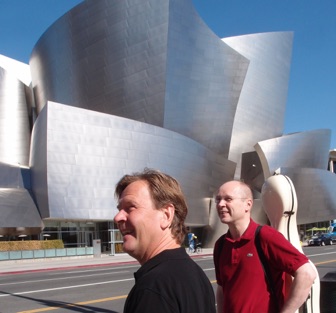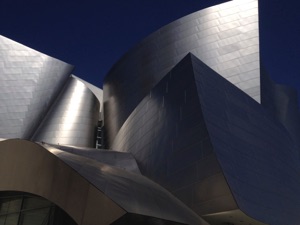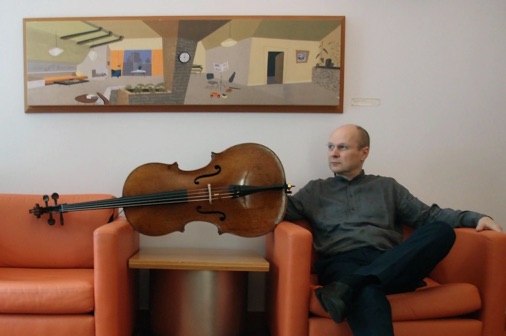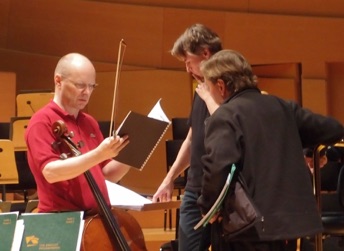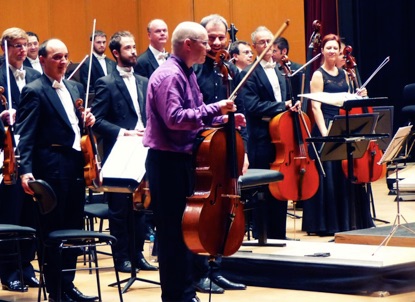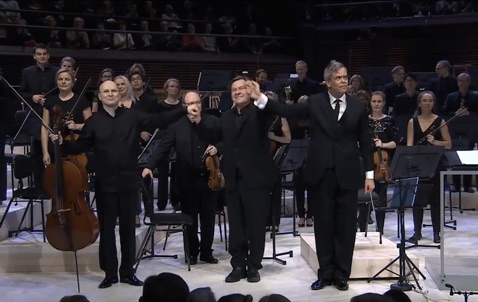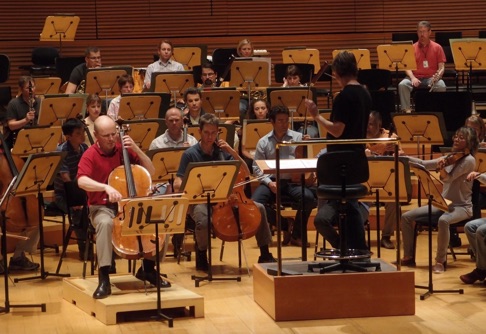Magnus Lindberg's Cello Concerto 2 was born under unusual circumstances involving three of my best friends. In 2006 Magnus wrote the Santa Fe Project for cello and piano for the Santa Fe Chamber Music Festival and we played it together in Santa Fe and in La Jolla, California. He mentioned immediately that he felt the piece was asking to be orchestrated. The following winter he told me that he had advanced quite far with the orchestration but had to leave it unfinished because of other work. He promised to come back to it once some orchestra commissioned it.
Years went by and a suitable commission didn't materialize. I was starting to get worried that if too much time went by he would not be able to return to an old piece. Suddenly in the summer of 2013 a problem came up for which Magnus' unfinished orchestration would eventually be the solution. Oliver Knussen was writing a Cello Concerto for me to play in Los Angeles on the 18th of October that year. The piece had been postponed once already, replaced that time with Dutilleux's Tout un monde lointain. At the beginning of July it started to look more and more likely that Olly would not be able to finish his Concerto in time, but he really wanted to write it and didn't want to cancel yet. I was getting very stressed at the idea that if he did finish the piece just a few days before the concert I would not have time to learn it and would be a nervous wreck the whole summer waiting for it.
At this point I told of my worries to Esa-Pekka Salonen (who was to conduct) and we put together a plan B. Esa-Pekka asked the Los Angeles Philharmonic if they would agree to re-program Olly's Concerto later should he postpone and - by the way - would they agree to pass on the commission to Magnus if I could persuade him to finish his 2nd Concerto. They agreed, on the condition that I convince Olly and the piece be delivered on the 1st of September. Next I asked Magnus if he would have time to finish the piece in the weeks that remained. He said he could try, provided Olly was on board with the idea. So I was left with the task of writing the most diplomatic e-mail of my life to Olly explaining the situation, the stress I was going through and finally suggesting that by pulling out this time he would actually help a composer friend and give me an extra concerto to play. This would allow him to write his own concerto when he felt ready and the premiere in Los Angeles would still happen. Olly took pity on me and agreed that we could proceed with Magnus, who by this time had only 5 weeks to finish his Concerto.
That summer Magnus had to give up all the fishing, family time and mushroom hunting he was planning for and isolate himself to finish the piece. On the 31st of August at 9pm I received the piece by e-mail. At that moment, although I felt an unbelievable weight lift off my shoulders I couldn't make myself click on the file to open it. When I finally did I just stared at it and felt tears running down my face. Relief, happiness, sadness, excitement, all got mixed up in my head.
Because of this background and because the Concerto is also a wonderfully exciting piece I have a very special relation with it. Meanwhile, the plan for Oliver Knussen's Concerto stayed alive, the concert was re-programmed many times, every time there was some reason to delay it just a little further. Olly kept describing to me how the piece was developing in his head. The form changed, the number of movements also, I was starting to know the piece quite well by description. It just needed putting down on paper and some corners needed polishing. But he could never make himself actually sit down and write it. When Olly suddenly died last summer the plan of the Cello Concerto finally died with him. All I ever got to see was one page of the solo part which he faxed me about 11 years ago. I feel an immense sadness for losing a friend but I can't feel too sad about the concerto not having been finished. The time just was not right for his piece but thanks to that we have another wonderful Concerto that might not have been born otherwise.
Anssi Karttunen, September 2018
Program notes for the Premiere in Los Angeles 18-20. October. 2013:
Magnus Lindberg and Anssi Karttunen are long-time friends, colleagues and performing partners. On his website, Karttunen lists 13 works by Lindberg that feature the cello, from 1978 to 2010 (not including this newest creation). Karttunen has premiered, recorded, and/or transcribed or arranged most of them. They play recitals together as Dos Coyotes, which is also the title of a piece on an Ondine CD recently nominated for a Gramophone Award in the contemporary music category.
Lindberg’s works for cello and orchestra also often involve Esa-Pekka Salonen in his conducting role. The competing disc that just won the Gramophone Award for contemporary music is a program of music by Henri Dutilleux that includes Karttunen playing that composer’s cello concerto, Tout un monde lointain, with Salonen conducting the Radio France Philharmonic Orchestra for Deutsche Grammophon.
Karttunen and Salonen gave the world premiere of Lindberg’s Cello Concerto No. 1 with the Orchestre de Paris, in May 1999, followed a month later by the U.S. premiere with the Los Angeles Philharmonic at the Ojai Festival; they repeated the Concerto here in April 2002. (Karttunen, of course, has also been closely associated with Salonen in his composing mode, playing and recording YTA III, the concerto Mania, and Sarabande per un Coyote.)
In his First Cello Concerto, Lindberg began with the soloist alone, bringing in the orchestra in subtle echoes and elaborations. He opens similarly here, in a compressed way. High and lonely, the solo cello presents the basic motif, a minor third (B – D) expanding to a perfect fourth (B-flat – E-flat), with the violas and second violins a ghostly shadow. The soloist extends the expansion with a phrase up to F-sharp that also offers plenty of pliable motivic elements, rhythmic and gestural as well as intervals and pitches.
From there the Concerto unfolds as a series of continuous variations, like a very detail-oriented passacaglia. The monster cadenza at the centre of the piece is fully composed, unlike the cadenza in Lindberg’s First Cello Concerto, which was improvised, or, as Karttunen said, “left to the soloist’s (in-) discretion.” Shortly into the cadenza, Lindberg reminds us of that basic motif, as the cello oscillates between B and D in a shivery sul ponticello tremolo, suddenly highlighted by the upper orchestral strings.
The cello takes up the cadenza from that point with a passage emphasizing its low C string. After the cadenza, the pull of that low C becomes stronger, as bass lines descend toward it. At the end, the orchestral basses push past it, to low B, and Lindberg has the soloist detune quickly, to close softly on low B. With all of the motivic exuberance winnowed away, the final destiny of the manic interval expansion is revealed: a perfect fifth, B and F-sharp.
© John Henken

